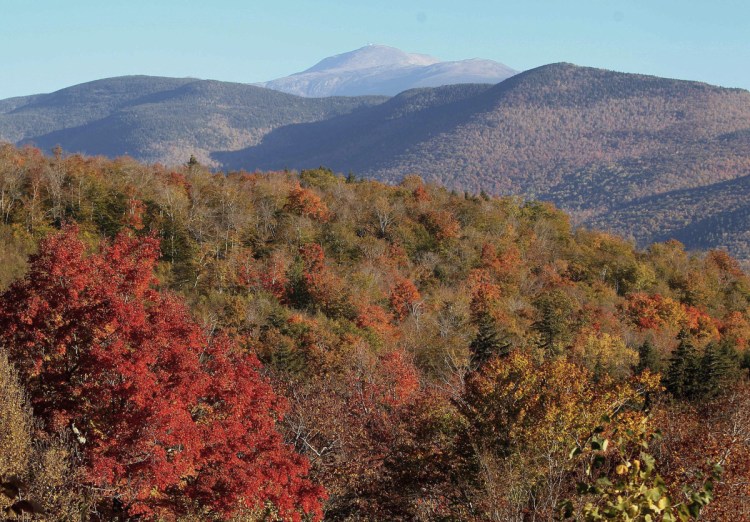PLYMOUTH, N.H. — New Hampshire’s most iconic attraction had been decimated by forest fires and logging when President Woodrow Wilson established it as a national forest a century ago.
Now, the White Mountain National Forest stretches over 800,000 acres in the northern part of the state and part of Maine. The forest is home to several ski lodges, campgrounds and has more than 1,200 miles of non-motorized hiking trails.
It attracts millions of visitors each year and has become part of the state’s economic engine, contributing to the nearly $9 billion outdoor recreation industry that supports almost 80,000 jobs. Beyond that, it is a source of pride among New Englanders.
“There’s a reason why it’s called ‘the people’s forest.’ It belongs to us all,” said Cynthia Robinson, director of the Museum of the White Mountains at Plymouth State University.
The U.S. Forest Service kicked off the centennial celebration with an exhibition Wednesday that illustrates the forest’s history through art, artifacts and interactive experiences. Visitors will be immersed in sounds from different parts of the forest – bird calls, babbling brooks, leaf-crunching – and will also be able to comment on what they envision the next 100 years to be for the federally protected land. The exhibit will run through mid-September.
A timeline of the 100 years runs along the walls of the two-floor exhibit, marking important events in the forest’s history, like in 1959 when the Kancamagus Highway was completed and designated as a national scenic byway. It also tracks the amount of acreage purchased by the federal government through the years.
“I hope people who come to the exhibit learn things about the forest they had no idea existed,” Robinson said. “The goal is to get people excited enough to participate and show good stewardship.”
Good stewardship was mostly a dream more than 100 years ago in the forest. Mostly in private hands, 10 percent of the region had burned in a series of forest fires, according to forester David Govatski. Hillsides were denuded by logging and streams and creeks had become polluted. It was those dirty waterways that prompted the Weeks Act of 1911, which led to the creation of national forests in the eastern U.S.
“Looking at the history of it, it’s an incredible conservation success story,” said Evan Burks, public affairs officer for the White Mountain National Forest. “We have this diverse forested landscape that provides clean water and unsurpassed recreation activities, and it’s become this symbol for not just New Hampshire, but all of New England.”
When the forest service took charge of preservation efforts in the early 20th century, its original intent was to regrow those forests and restore polluted streams. Govatski, a retired U.S. Forest Service worker, said much has been done to return the forest to its natural state – though it remains a work in progress.
“It took a long time to get to where the forest is now, but restoring wildlife and fisheries is still a continued effort to this day,” Govatski said. “My impression is that they want to take a look back and reflect on its successes, but also look forward on how we’re going to preserve these resources for future generations.”
The forest service hopes the events planned this summer, including field trips and lectures, renew the call to action from over a century ago that set the environmental legislation in motion. The forest service seeks to inspire younger generations to volunteer to help maintain the land.
“This has been a huge history lesson on a place that I spent a lot of time in growing up,” said 19-year-old Liam Colby, a junior at Plymouth State and the museum’s receptionist. “It makes me want to be part of something bigger than myself.”
Send questions/comments to the editors.



Comments are no longer available on this story